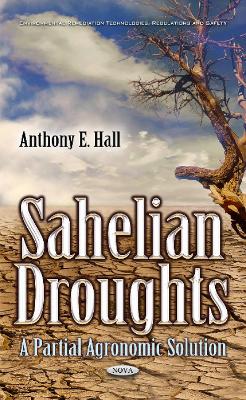The Sahelian zone stretches across Africa from Senegal and Mauritania in the west to Sudan in the east, passing through Mali, Burkina Faso, Niger and Chad. The Sahel transition zone is adjacent to the southern boundary of the Sahara Desert, and its agriculture usually is limited by droughts. Since 1970, the droughts have been even more extreme, and major food crops produced little food/forage for livestock for many years. Millions of people living in the Sahel have suffered from famine and hundreds of thousands of people have died. As of 1974, it was estimated that the livestock population had decreased by about 80%. In the early 1970s, while working as an agronomist/ Professor at the University of California in Riverside and conducting collaborative research in Senegal, Dr. Hall designed a partial agronomic solution to these droughts. In implementing this solution, he collaborated with African students and scientists to breed cowpea varieties that could withstand these droughts and provide food for people and livestock alike. Early-flowering cowpea varieties with resistance to drought, various pests and diseases were bred by researchers in California, Senegal, Sudan and Ghana. Cowpea varieties were released in Senegal, Sudan and Ghana that have produced significant amounts of food in years when traditional cowpea varieties and other staple food crops died out. Enhanced cowpea breeding and agronomy programs now are being conducted by African scientists in Senegal, Burkina Faso, Niger, Cameroon, Nigeria, Ghana and Sudan.
- ISBN10 1536104299
- ISBN13 9781536104295
- Publish Date 1 January 2017
- Publish Status Unknown
- Publish Country US
- Imprint Nova Science Publishers Inc
- Format Hardcover
- Pages 200
- Language English
